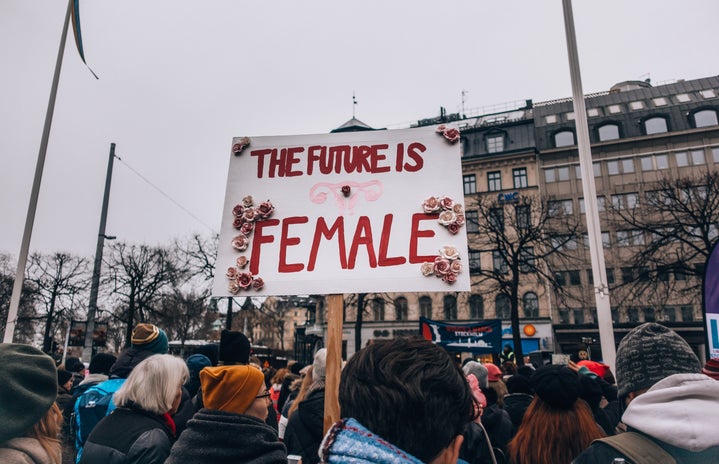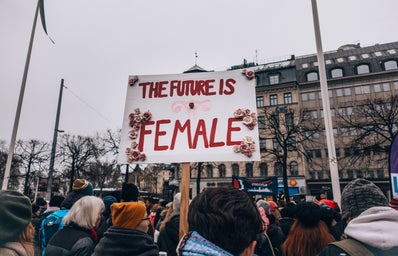Trigger Warning: sexual assault
It was only until I reached the end of Emily Ratajkowski’s essay ‘Buying Myself Back: When Does A Model Own Her Own Image?’ in New York Magazine that I realised I had been holding my breath the entire time. In what is perhaps her most vulnerable piece of writing to date, Ratajkowski reflects on a series of disturbing experiences in which various men have exploited her image throughout her career. She begins by describing how posting a simple paparazzi shot of herself to her own Instagram story led to a lawsuit, a strange case of her own image being used against her for financial gain. It was through encounters like this with the press, ever since 2013 when she starred in Robin Thicke’s controversial music video, that Ratajkowski came to understand the reality of being a public persona—“my image, my reflection, is not my own”.
The essay continues, as she details the dilemma of being one of Richard Prince’s subjects for his “Instagram Paintings” installation without her approval—something she was told to be grateful for given his renowned status in the art world. Prince had printed two of Ratajkowski’s Instagram posts on different canvases, with his own comments beneath each photograph. When one became available for purchase, at the insistence of her boyfriend at the time to own such an expensive piece, the Gone Girl actress split the $80,000 price tag with him. Following their breakup, Ratajkowski writes how although this artwork was hers to keep when dividing their assets, a custody battle ensued over a smaller study she had received as a gift from Prince’s studio. Ultimately, her choice to wire the sum of $10,000 to her ex-boyfriend was in response to her fear of once again being a victim of revenge porn; back in 2014, she was one of hundreds of celebrities who had intimate nudes leaked online without their consent. The model found herself in another familiar yet bizarre experience of having to purchase her own image so that it would not be in the hands of another person.
Ratajkowski goes on to describe what is perhaps the most disturbing experience of the entire article. During a 2012 shooting for Darius magazine, photographer Jonathon Leder sexually assaulted Ratajkowski in his home after spending the evening intoxicating her with alcohol and slowly progressing from lingerie to nude photos. She mentions her comfort doing nude shoots, yet her experience with Leder appeared to unnerve her, especially given her inebriated state:
I’d been shot nude a handful of times before, always by men. I’d been told by plenty of photographers and agents that my body was one of the things that made me stand out among my peers. My body felt like a superpower. I was confident naked — unafraid and proud. Still, though, the second I dropped my clothes, a part of me disassociated. I began to float outside of myself, watching as I climbed back onto the bed. I arched my back and pursed my lips, fixating on the idea of how I might look through his camera lens. Its flash was so bright and I’d had so much wine that giant black spots were expanding and floating in front of my eyes.
The actual incident is rough and bleak. Ratajkowski’s pain is distressing to read but even years later, she was not free from Leder. She found out that he was selling a book without her consent, full of the most explicit photographs he had taken of her during the shoot that had not been published prior in the magazine. Despite not having signed any documents that gave Leder permission for using those photographs anywhere else, any legal battles seemed to be futile on Ratajkowski’s part. Her attempts to denounce his actions on her Twitter platform only resulted in a wave of backlash, with people shifting the blame onto her for doing the shoot in the first place. Resistance only worsened the situation, it seemed. So Ratajkowski was forced to watch Leder open a well-attended gallery exhibition and go on to publish two more books using photographs from that night. Her name and image is continuously appropriated as a means of profit by the man who belittled and assaulted her all those years ago.
When New York Magazine reached out to him, Leder vehemently denied the allegations.
He said my allegations were “too tawdry and childish to respond to.” He added: “You do know who we are talking about right? This is the girl that was naked in Treats! magazine, and bounced around naked in the Robin Thicke video at that time. You really want someone to believe she was a victim?”
His response only seems to further implicate him. His entitlement to Emily Ratajkowski’s body, his argument that sexually open women warrant any sort of assault, is merely an echo of the persistent rape culture we all live in; men strip women of their autonomy, hypersexualise and capitalise off of their bodies, then discard them once they have served their purpose. A balance of promiscuity with blades at both ends—are you a prude? Or are you a whore?
Worse still, Leder’s immediate response seems to be to infantilise a woman he had sexually exploited. A comment that was left under The Cut’s article by user ‘cinemagique’ regarding the “iCarly” caption Leder published beneath the polaroids on Instagram after the shoot seems to best summarise this:
This young woman he is feeding wine to, meant to be working with, whom he has pose nude for him, whom he evidently sexually desired enough to, you know, assault her… and it gets him off to infantilize and/or mock her by bringing up her part on a children’s TV show. the one she appeared on as a child.
Imagine that his kids watched it? imagine how gross you’d have to be to have that image on your mind of a person you’re attempting to (and succeeding in) sexually exploiting…
In an industry where paedophilia and grooming are so rife, where young models are actively preyed upon and recruited, where it is considered the norm for young girls to be alone and unclothed in front of men several decades their senior, is it a surprise that Leder found success as a photographer? The fashion industry sells and advertises the ‘ideal’ woman to us—the ‘ideal’ woman who is younger and slimmer and lighter-skinned every single day—and then punishes the women who do not conform to these impossible standards. Even then, the women who do find themselves being upheld as the standard are not protected by these systems, but rather publicly humiliated and expropriated for daring to find confidence in their own bodies. What escape is there in a cycle of shame and theft?
Arguably, what resonates most is how Ratajkowski’s relationship with her body changed as a result of the sexual assault. She recalls the moment before he attacked her:
As I spoke, I absentmindedly rubbed my feet against one another and against his for warmth. He told me he liked “that foot thing you’re doing,” and I remember this moment more clearly than anything else. I hate that Jonathan commented on something I’ve done throughout my life to comfort myself. I hate that sometimes, even now, when I rub my feet together because I’m cold or afraid or exhausted, I think of Jonathan.
Even through our bodies, even through our coping mechanisms, there is no escape from the violence. To be a woman is to be an illusion of all that society values. There is no superlative woman that stands in her spotlight without the shadow of a man threatened by her success dimming it. Under capitalism, young girls are taught they are commodities and that their value lies in how much men want them. The fear of being undesirable is used to exploit and further divide us; we are pressured to compete to gain the favour of the very people who take advantage of us. We are victims, but we can also be complicit in the system in our desperation to survive. Ratajowski herself recounts the unhealthy competitiveness that festered in her when Jonathon Leder presented her with polaroids of women he had shot previously:
Something switched inside me then. As I looked at the images, I grew competitive. This guy shoots all these women, but I’m going to show him that I’m the sexiest and smartest of them all. That I am special.
It is a terrifying thought to know that even a woman with so much privilege and wealth like Ratajkowski cannot be protected from harm. The system is daunting and so often there seems to be no solution. But it begins as a collective, by us all amplifying the voices of those who have been assaulted and abused, by being critical of the choices we make as we navigate the system, by refusing to sink into resentment and rivalry, by centring women—particularly those marginalised in society—in our struggle for justice. Only then, do we begin to move forward.


